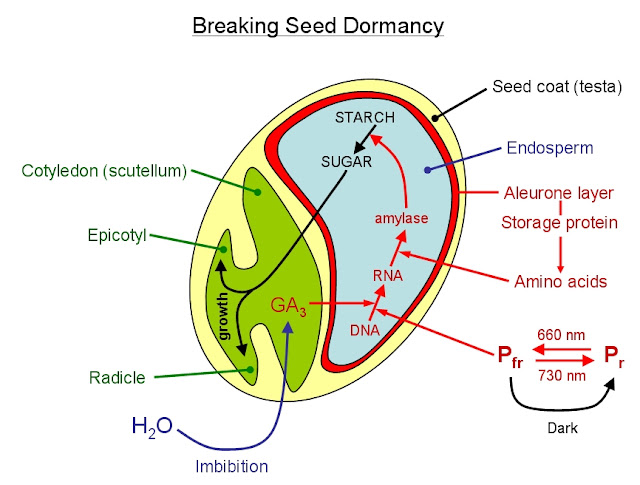New Update Role of Sulphur (Function and Deficiency symptom)
B.Sc.Ag. (Hons) Part-I
 |
| Sulphur deficiency.https://cststudy.blogspot.com/ |
Sulphur
Function
i. The most obvious function of sulphur is its participation in protein structure in the form of the sulphur-bearing amino acids cystine, cysteine, and methionine. It helps in synthesis of protein and amino-aids like cystein, methionine, S-bearing vitamins (thiamine and biotine), lipoic acid, acetyl coenzyme A, ferredoxin and glutathione.
ii. It is involved in activating enzymes participating in the dark reactions of photosynthesis and carbohydrate metabolism of plants.
iii. It increases oil content in oil crops like soybean, groundnut and linseed.
iv. It is required in conversion of nitrogen into protein in symbiotic nitrogen fixing legumes.
v. It forms active sulphate-3 phosphoadenosine-5 phosphosulphate which synthesizes glucosides in mustard oil, pungency in onion, radish etc.
vi. Sulphur is involved in the formation of chlorophyll and thereby encourages vegetative growth. But it is not a constituent of chlorophyll.
vii. Sulphur forms an important constituent of straw and plant stalks.
viii. It promotes the nodule formation on the root of leguminous plant.
ix. It hastens root growth and stimulates seed formation.
x. Pungent odour of onion and garlic is due to the presence of S compound.
Deficiency symptom
i. The visible symptoms of sulphur deficiency resemble somewhat those of nitrogen deficiency. As in nitrogen-deficient plants, there is a general chlorosis, followed by the production of anthocyanin pigments in some species.
ii. Unlike nitrogen-deficient plants, sulphur-deficient plants show chlorosis of the younger leaves first. Under severe conditions, however, all of the leaves may undergo some loss of green colour. Although S is mobile in the plant, redistribution is not as great as that of N and so does not cause firing of lower leaves as does N deficiency.
iii. Leaves of the cereal crops show interveinal (between veins) chlorosis.
iv. In mustard the lamina is restricted, leaves become cup-shaped with margins curled and growing points remain arrested.
v. The older leaves develop orange or reddish tints and they may shed prematurely.
vi. The stem and petioles become brittle and they may collapse.
vii. Slow plant growth with slender stalks is observed.
viii. Nodulation in legumes may be poor and nitrogen fixation is reduced.
If you can't understand something please comment below...



Comments
Post a Comment